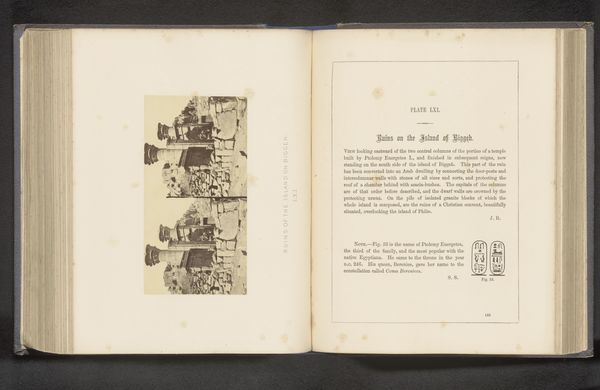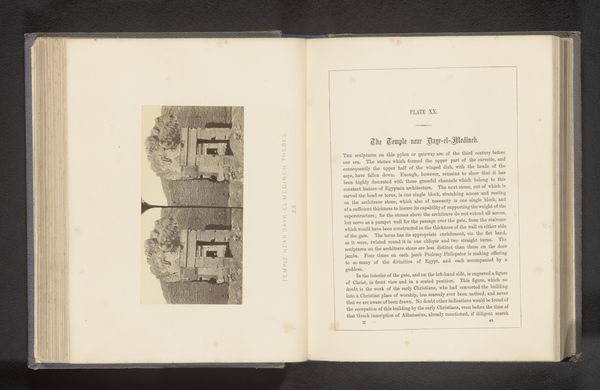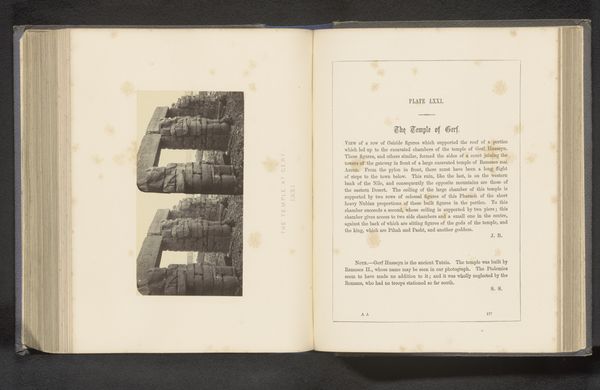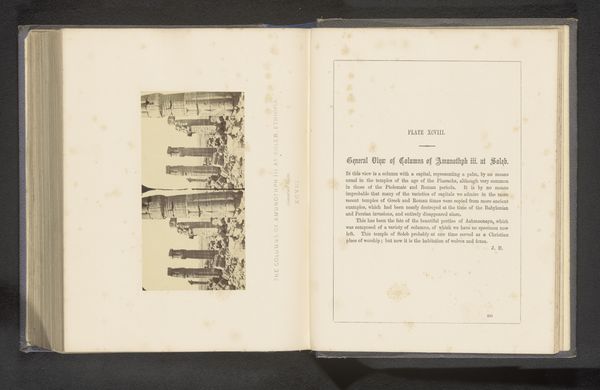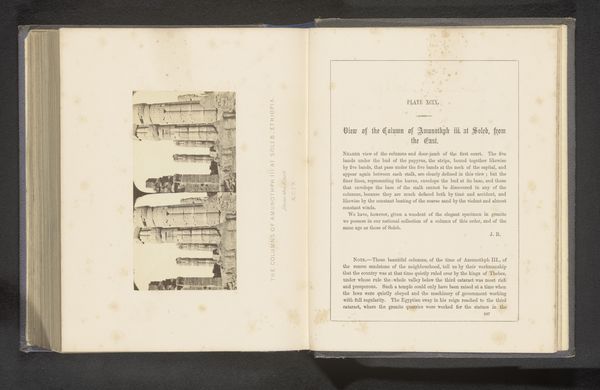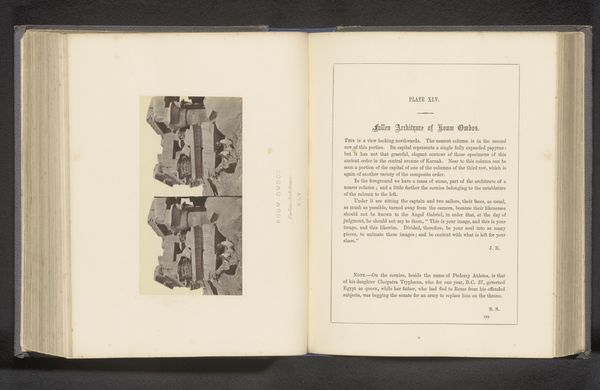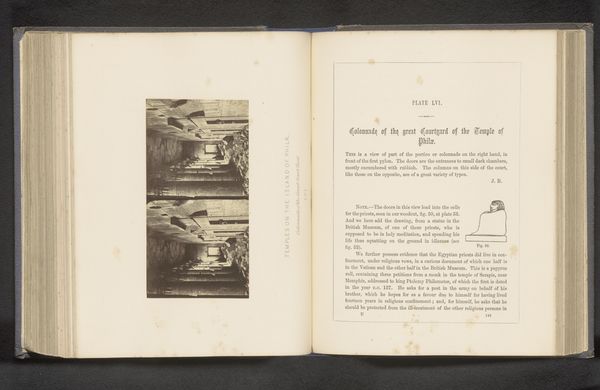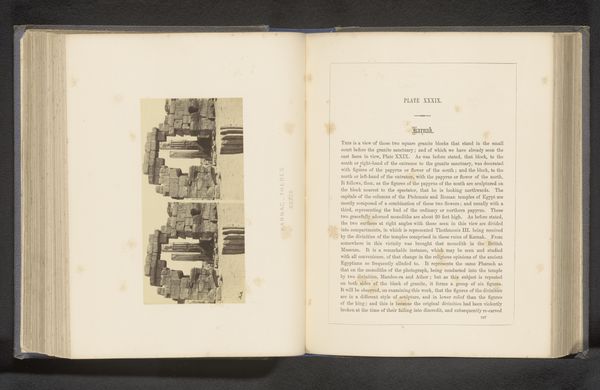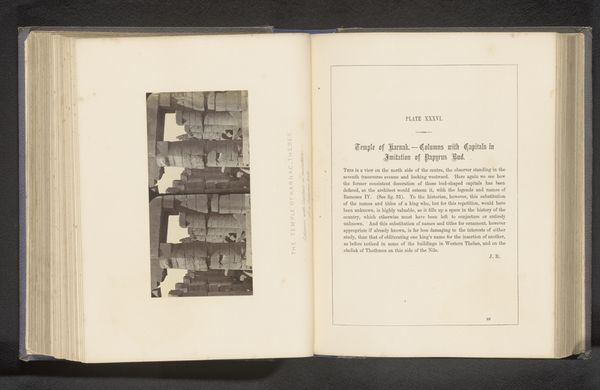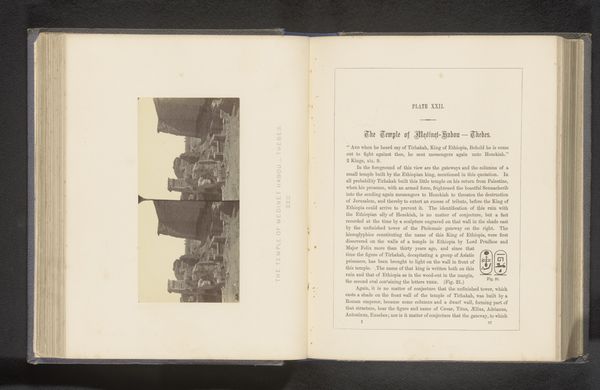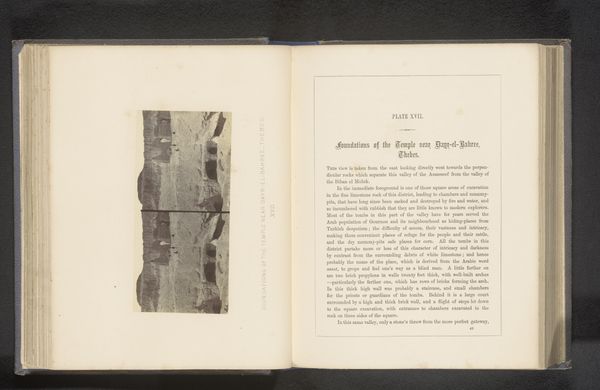
print, photography, albumen-print, architecture
#
aged paper
#
homemade paper
#
paperlike
# print
#
sketch book
#
landscape
#
ancient-egyptian-art
#
paper texture
#
photography
#
personal sketchbook
#
ancient-mediterranean
#
folded paper
#
history-painting
#
letter paper
#
paper medium
#
albumen-print
#
architecture
#
historical font
Dimensions: height 76 mm, width 144 mm
Copyright: Rijks Museum: Open Domain
Curator: Here we have Francis Frith's albumen print, "Ruïnes van poorten bij de Kalabashatempel," capturing the ruins of gateways at the Kalabasha Temple, sometime before 1862. The Rijksmuseum holds this fascinating piece. Editor: Wow, it has an undeniably melancholic feel to it. The way the light filters through those crumbling structures... It speaks of grandeur faded, stories whispered in the dust. There's a rawness to it that grabs you, like you're standing right there amidst the echoes. Curator: The albumen process itself contributes to this atmosphere. Notice the tonal range, how Frith captures the stark contrasts between light and shadow. The composition focuses our attention on the geometry of the temple's remains, revealing the underlying structure. We should note the repeated square shapes, their subtle variation drawing the eye deeper into the scene. Editor: Yes! It's like stepping back in time and also walking into a recurring dream. I like the double image also-- are those two viewpoints perhaps related to this architecture and it’s ruinous nature? It creates a disorienting effect. I’m unsure of it's use, but perhaps speaks to two realities-- as it was and as it now lays. A photographic memorial, a kind of memento mori. Curator: Interesting. We can see, even in its fragmented state, evidence of architectural planning-- intentional use of form and the precision with which the architecture must have been produced. The temple's design must have functioned within very intentional framework for both sacred rituals and for defining hierarchical spaces for the inhabitants of its surrounding area. Editor: It's strange to think about a space that has, seemingly, given up it's original intentions to only speak about time and fragility, isn't it? Now it prompts endless questions instead. Curator: A pertinent observation. It reminds us of art's capacity to both record and reinterpret, questioning what survives and why it resonates. Editor: It has given me new ways of looking at these temples as more than just beautiful shapes frozen in place but more so to feel for what used to exist there... To experience what used to matter deeply in life, as fleeting as it always seems to be.
Comments
No comments
Be the first to comment and join the conversation on the ultimate creative platform.
